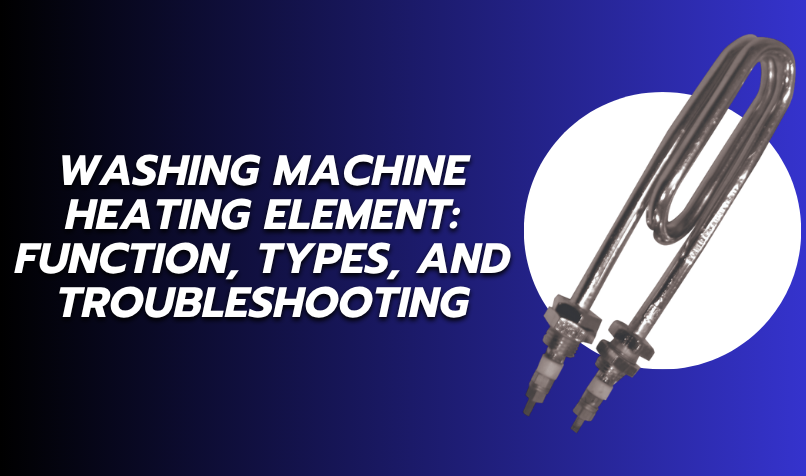
Have you ever wondered why your washing machine isn't cleaning clothes properly? One likely reason could be a faulty heating element. The heating element plays a critical role in heating water to the desired temperature—vital for removing stains, killing germs, and ensuring optimal detergent performance.
In this blog post, we'll explain the function of a washing machine heating element, explore its types, and offer practical troubleshooting steps. Whether you're a homeowner, technician, or dealer, this guide is your go-to resource.
A washing machine heating element is a metal component—usually made from stainless steel or copper—that heats the water during a wash cycle. It is usually installed in the lower rear of the machine's drum.
Main Functions:
When the heating element stops working, washing performance drops—especially in colder climates or for heavily soiled clothes.
Different machines use different heating technologies based on design, cost, and efficiency. Here are the most common types:
1. Tubular Heating Elements
2. Immersion Heating Elements
3. Ceramic or Infrared Heating Elements
4. Heating Elements with Integrated Thermostats
Powerpack Electricals manufactures high-quality heating elements compatible with major brands including LG, Whirlpool, IFB, Bosch, Samsung, and more.
Is your washing machine acting up? Here’s how to spot heating element issues:
You don’t always need to call a technician—many heating element issues are easy to identify:
1. Unplug and Inspect
2. Test Continuity with a Multimeter
3. Look for Limescale Buildup
4. Test the Thermostat (if applicable)
Replace your washing machine heating element when:
Powerpack Electricals provides 100% compatible, high-performance replacement heating elements across India.
As a leading manufacturer of electrical heating solutions, we offer:
The heating element is the powerhouse behind hot washes in your washing machine. If you’re experiencing heating problems, use this guide to inspect and troubleshoot the issue. And when it’s time to replace it—trust Powerpack Electricals for durable, high-quality heating elements.
Yes, if you have basic electrical knowledge and tools. Otherwise, contact a professional technician.
On average, 5–10 years, depending on water quality and usage frequency.
Yes, we manufacture custom and standard elements for top brands like LG, IFB, Samsung, Whirlpool, and more.